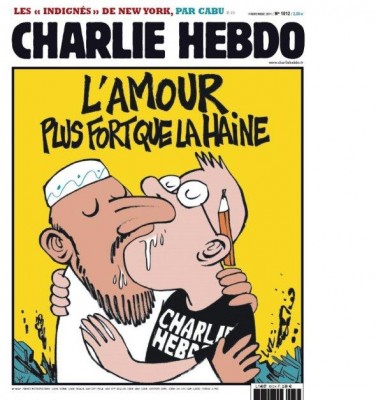There is, of course, no obligation in a free society to publish anything. But when the content of a magazine has evidently inspired a massacre at that magazine’s offices, it is hard to fathom the decision to censor or suppress the material in question.
But that is exactly the approach several prominent news outlets are taking in the wake of the massacre at the Paris offices of the weekly Charlie Hebdo. The New York Times explained to readers that it “has chosen not to reprint examples of the magazine’s most controversial work because of its intentionally offensive content.” An internal CNN memo, reported by Politico’s Hadas Gold, explained that the channel would not show the cartoons themselves but could “verbally describe the cartoons in detail.” The memo added:
Video or stills of street protests showing Parisians holding up copies of the offensive cartoons, if shot wide, are also OK. Avoid close-ups of the cartoons that make them clearly legible.
Other outlets were following suit, as reported by CNN:
NBC News said that the network will not be showing “headlines or cartoons that could be viewed as insensitive or offensive,” and that guidance also applies to CNBC and MSNBC.
Another major network, ABC News, has taken the same position.
A CBS News executive, meanwhile, said the network had implemented no explicit ban on the Mohammed cartoons, but had instructed its producers to exercise judgment.
Wednesday’s CBS Evening News showed some of the magazine’s provocative cartoons, but none that depicted the prophet. Other outlets took a similar approach, showing covers that did not feature Mohammed.

Following Wednesday’s attack, the photo has been replaced on the AP’s website with a note that reads, “Oops! This image is not part of your portfolio. Please contact customer support.”
But other outlets were taking a different approach, understanding that–at the very least–readers should be able to see the controversial art for themselves. The Daily Beast, Huffington Post and Vox are among the media outlets that have published collections of Charlie Hebdo’s cartoons. And it’s not just so-called “new media” that think controversial, newsworthy art should be viewed: The Washington Post’s op-ed page reprinted one cartoon alongside a Charles Lane column.
NCAC has joined other press freedom and anti-censorship groups in publishing a selection of the magazine’s controversial cartoons. As the Index on Censorship explained:
Only through solidarity – in showing that we truly defend all those who exercise their right to speak freely – can we show those who would use violence to silence free speech.


